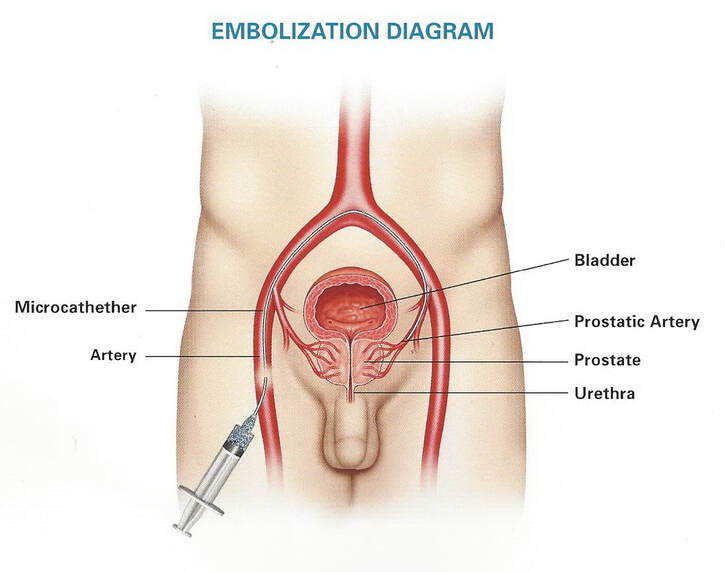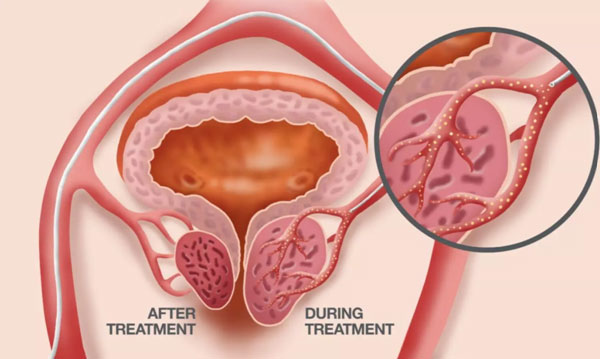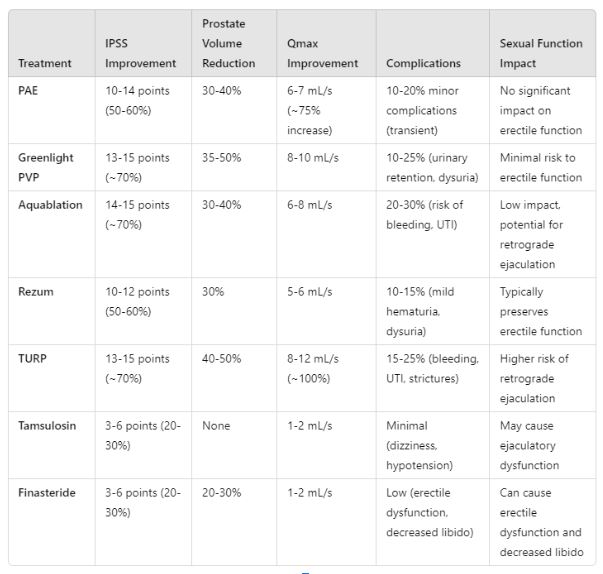Prostate Artery Embolization (PAE) is a minimally invasive procedure designed to treat benign prostatic hyperplasia (BPH), commonly known as an enlarged prostate. This condition affects many men as they age, leading to urinary symptoms that can significantly impact quality of life. PAE offers an alternative to traditional surgical methods, providing relief with potentially fewer side effects.
Understanding Prostate Artery Embolization (PAE)
PAE involves the intentional blockage of the arteries supplying blood to the prostate gland. By reducing blood flow, the prostate shrinks over time, alleviating pressure on the urethra and improving urinary symptoms. The procedure is performed by an interventional radiologist, a physician specializing in image-guided, minimally invasive treatments.
Procedure Overview
-
Anesthesia: PAE is typically performed under local anesthesia with light sedation, allowing patients to remain awake without feeling pain in the treatment area.
-
Accessing the Arteries: A small puncture is made in the groin or wrist to access the arterial system. Through this entry point, a catheter is guided to the arteries supplying the prostate.
-
Embolization: Microscopic particles are injected through the catheter into these arteries, blocking blood flow to the prostate. This reduction in blood supply causes the prostate to shrink over time.

Benefits of PAE
-
Minimally Invasive: Unlike traditional surgeries, PAE doesn’t require large incisions, reducing the risk of complications and promoting quicker recovery.
-
Outpatient Procedure: Many patients undergo PAE on an outpatient basis, allowing them to return home the same day.
-
Reduced Risk of Sexual Side Effects: PAE has a lower incidence of sexual dysfunction compared to some surgical treatments, preserving erectile function and ejaculation in many cases.
Potential Risks and Considerations
While PAE is generally safe, potential risks include:
-
Temporary Discomfort: Some patients may experience pelvic pain, frequent urination, or blood in the urine shortly after the procedure.
-
Infection: As with any procedure involving arterial access, there’s a slight risk of infection.
-
Non-Target Embolization: Accidental blockage of nearby arteries can occur, though this is rare and minimized by the expertise of the interventional radiologist.
Recovery and Outcomes
Most patients resume normal activities within a few days following PAE. Symptom relief varies among individuals but often begins within a week, with continued improvement over several months as the prostate continues to shrink.
Is PAE Right for You?
PAE is suitable for men experiencing moderate to severe urinary symptoms due to BPH, especially those who haven’t responded well to medications or prefer a less invasive option than traditional surgery. A thorough evaluation by a urologist and an interventional radiologist is essential to determine if PAE is the best treatment choice for your specific situation.
Experience Matters for Quality Outcomes
Fore River Urology knows that patients have come to rely on us for quality and excellence, for this reason Dr. Raj Ayyagari, a world-renowned interventional radiologist, will be performing PAE in Portland for patients in Maine. He is in the top 1% in PAE procedures performed and will be providing this service for patients in Fore River Urology’s dedicated PAE suite at 21 Donald B. Dean Drive in South Portland.
Conclusion
Prostate Artery Embolization represents a significant advancement in treating BPH, offering a less invasive alternative with a favorable safety profile. Men considering PAE should consult with their healthcare providers to thoroughly understand the benefits and potential risks, ensuring an informed decision tailored to their health needs.
More Patient Resources:
Podcast episode:
About the procedure:



